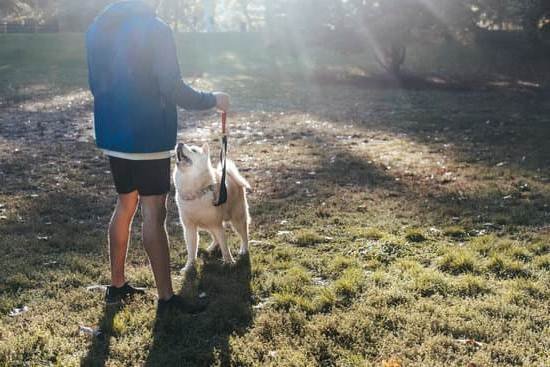Introduction
A Dog Training Collar is a collar and attached remote control device which can be used to train a dog to follow commands. Typically, the collar produces an audible sound or vibration in response to a command from the remote controller, prompting and guiding the dog as it obeys its master’s instructions. The benefits of using a 300m Remote Training Collar include being able to train your dog from much longer distances due to the superior range of the model. You will no longer have difficulty training your pet from beyond your usual boundaries like the house or yard. With the extended range of up to 300 meters away, you can now exert better control over your dog’s behaviour even when he isn’t nearby. Additionally, this type of collar is known for its superior sound quality, meaning less “static” noise to distract your pet during commands. This also makes hearing each individual command easier for them as well.
Pre-Use Preparation
When selecting the best collar for your dog’s training, it is important to consider the size of your dog, how much physical correction and range are needed, as well as what type of behavior you are trying to address. For instance, for a smaller dog in need of basic commands such as “Come” and “Stay”, a 300m remote collar may not be ideal. On the other hand, if you have an escape artist who needs reminders to stay inside the boundaries of your yard or property, then a 300m remote collar could be great for providing quick corrections when necessary. Additionally, some collars offer noise-based stimulation options that allow correction without physical contact. These can work well for timid dogs or those with lower thresholds who prefer these gentler forms of discipline. Furthermore, consider talking to professionals or doing some research on which features and functions might best suit your dog’s needs before making your final choice.
How To Set Up and Operate the Collar
Step 1: Fit the collar and secure the receiver unit to the dog’s neck:
Take a measuring tape (or a piece of string) and measure around your dog’s neck before you get started. Cut the belt of the collar so that it fits snugly around your dog’s neck. Make sure you leave enough slack in the belt for two fingers to fit between the collar and your dog’s neck, so it will be comfortable for them.
Next, use scissors or clippers to cut off any excess material in order for the belt buckle to fit properly against your pet’s fur without pinching or getting caught up in their hair.
Using Phillips head screwdriver, open up back of remote unit and insert 2 AAA batteries into “AAA” slot located on back side of unit — make sure they are secured tightly. Next, attach transmitter unit securely to collar using two screws provided; tighten screws firmly to ensure remote does not become detached from collar in case of tugging during training session.
Once transmitter is securely fastened onto remote, carefully place looped end of belt through D-ring opposite transmitter box, then clip hardened steel clasp through slot at end of belt until it locks securely into place; when correctly connected, both ends should be parallel and with equal tension against each other.
Step 2: Operate the Collar:
To operate the remote training collar, first, press power button located at top right corner of hand-held unit. The LED light should turn green indicating power is now on and functioning correctly. Now, simultaneously press both buttons on handheld device near LCD screen (up arrow/down arrow) until desired action appears on screen; there are 8 intensity levels available when operating this system (see table below).
Level 1 = Vibration Only | Level 2 = Low Shock | Level 3 = Medium Shock | Level 4 = High Shock | Level 5 = Canine Deterrent | Level 6 = Water Spray Only | Level 7 = Water Spray & Shock | Level 8 = Ultrasonic Tone & Autoshutoff
Step 3: Troubleshooting Unit Problems: Upon troubleshooting any issues with unit operation (such as frequent turning off or not powering up altogether), prior to disposing please check battery placement and contact Manufacturer for further advice if needed.
What to Look for When Using the Collar
When using a 300m remote dog training collar, it is important to ensure that the stimulation being used is healthy for your dog. Look for signs of discomfort or pain when the collar is administering stimulation. If these signs are present, then reduce the level of stimulation or stop using it altogether if necessary.
When observing successful dog training sessions, watch carefully to ensure you are providing an appropriate level of stimulation at each step in the process. Watch videos and read any available instructions that accompany your dog training collar to make sure that you understand how it works and how to adjust levels accordingly.
In addition to looking for signs of healthy stimulation, look for positive responses from your dog. It’s important that you stay consistent when using any training tool and good reinforcement will help in creating a positive association with commands and signals from the owner. Make sure your pup knows that every time they respond correctly, they get rewarded with positive attention as well as treats when appropriate.
Troubleshooting Common Issues
One of the advantages of purchasing a 300m Remote Dog Training Collar is the ability to troubleshoot common issues and resolve them in a timely manner. Many dog owners have had success with their training collars, and they can provide insights on potential difficulties associated with their products.
For instance, one owner recently shared that his dog was not responding to the collar’s vibration settings. After some experimenting, he found that increasing the intensity of the vibration mode usually did the trick. Additionally, he ran a few tests to make sure his remote transmitter was functioning properly and emitting signals accurately.
Another customer shared her experience about her puppy who wouldn’t stay within its designated area despite using shock settings on the collar. After rules were set for her pup and she followed up with positive reinforcement, such as reward treats working in conjunction with manual cues for accuracy, it only took two weeks before he learned all commands effortlessly.
The stories from these customers demonstrate that by troubleshooting common issues and employing various strategies with your remote training collar, even challenging behaviors from relatively stubborn dogs can be adjusted successfully over time.
Tips For Successful Training
Dos:
Use the collar only while specifically training your dog, and use it closely supervised.
Start at the lowest vibrate setting, and increase if necessary to get your dog’s attention.
Don’t be afraid to reward positive behavior with treats and praise.
Introduce the collar gradually over several days while also following up with praise-based reinforcement when appropriate.
Don’ts:
Avoid giving a correction before rewarding desired behavior as this will confuse your pet.
Do not constantly repeat commands without providing a reward or confirmation that the command has been heard – this can teach the dog that commands are pointless.
Do not leave the collar on for extended periods of time as it can cause skin irritation or other issues.
Conclusion
At the end of your article, you should encourage readers to leave feedback in the comment section to share their results and experiences with 300m Remote Dog Training Collars. This will help build a community of pet owners who can come together and discuss their successes, struggles, and tips they have used while working with their collars. It’s also a great way to find out more information on these products and get inspiration from other dog owners. If someone successfully trained their pup using the collar, it could be inspiring for others trying to do the same! Additionally, create an online support group or forum where people can ask questions about using these collars, share stories about training difficulties or successes, or just discuss pet care related topics. By creating this type of community you are providing a place where pet owners can go for advice, motivation and support from their peers.

Welcome to the blog! I am a professional dog trainer and have been working with dogs for many years. In this blog, I will be discussing various topics related to dog training, including tips, tricks, and advice. I hope you find this information helpful and informative. Thanks for reading!





